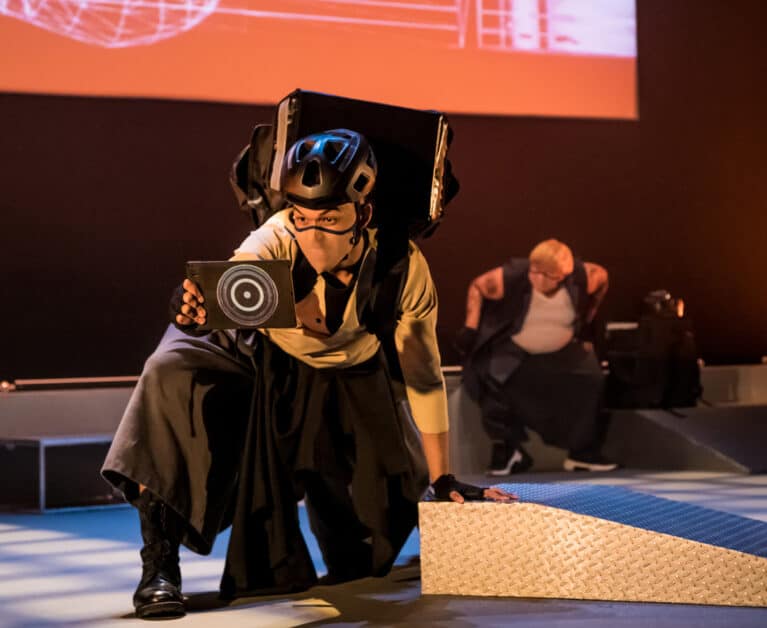Belongings: Celebrating Australian Aboriginal Art
PUBLISHED July 7th, 2012 07:38 pm | UPDATED May 9th, 2018 03:13 am
I have to admit I don’t know much at all about Australian Aboriginal Art. But my how that has changed since I had the opportunity to meet with Gabrielle Cummins, Founder of Australasian Arts Project and curator of Belongings. Running at the Australian High Commission from 2 July – 31 August to mark NAIDOC week, Belongings is an exhibition that will bring together more than 30 established and emerging artists from two of Australia’s most famous desert region art movements.
If you’re reading this and wondering what NAIDOC stands for, you are not alone for I have to confess that until recently I didn’t have the foggiest. However, I am now wiser knowing that in a nutshell it is the annual celebration of Australian indigenous culture and its contribution Australia’s national identity. More formally known as the not very catchy National Aboriginal Islander Day Observance Committee, it’s no wonder it goes by the acronym!
I’m sitting in the Australasian Arts Project HQ – a stunning old black and white on Tanglin Road whose walls are covered with aboriginal art, recently stretched and awaiting transfer to the exhibition- and in my Aboriginal art green state I can at least appreciate the boldness, vibrancy and sense of movement that is conveyed in these works. But my appreciation is about to get much deeper, thanks to Gabrielle.
Gabrielle is fanatical about contextualisation, and just as well, otherwise you might never truly understand just how incredible this art form – which is one of the oldest surviving practiced today – is. There are just so many layers of complexity to unravel.
Gabrielle explains how the modern aboriginal art movement started in the Western desert area and how other arts communities then developed in the Eastern desert area. It is these two important regions which serve as the cornerstones of Belongings.
The clues to the themes explored in the exhibition are very much given away by its title. Gabrielle explains that the exhibition is a culmination of “a rich body of ancestry and mythology, family connections, relationships to the land, current day relationships and artistic styles, as well as connections to the future in terms of the enterprise of making art and a livelihood.”
Also at the core of this body of works is Dreaming – a term used by Aborigines to describe the relationship and balance between the spiritual, natural and moral elements in the world and it is the stories which are handed down through the generations. Dreaming is what is at the core of the identity of the Aborigine people – each tribe has its own Dreamtime and it is this Dreaming which sets out the structures for society, social rules, ceremonies.
While Dreaming is very much a tribal ritual, individual artists interpret them in their own way – something which is very apparent from this exhibition and probably the thing I love most about it.
For example, take Maureen Poulson Napangardi – whose family is part of one of the tribes who are custodians of the Water Dreaming site of Kalipinypa, which is the site of a significant rain-making ceremony. Her Water Dreaming work below…
is quite different to that of Charlotte Phillipus Napurrala’s, whose family is also part of a tribe deemed to be custodians of this important water dreaming site, and therefore responsible for celebrating its stories.
Gabrielle points out that, “where Maureen uses the repetition of square shapes and colours to create textural representation of the rejuvenating earth, Charlotte’s work has a fluidity that poignantly evokes the movement of rain.” This in itself shows the fascinating, highly individualized relationships each of these artists have with their lands.
Another popular story depicted in the exhibition is that of Awelye – which refers to ceremonies associated with matters concerning the fairer sex (that’s women, don’t you know), and the ritual of painting designs on a women’s body. Emily Pwerle translates women’s ceremonial body design into bold, multi-layered patterns like so to mesmerizing effect….
And I just love the sense of energy and freedom in Natalie Pula Holme’s work inspired by the nature, landscape, patterns and shapes of the Eastern Desert.
Thanks to Gabrielle’s obsession with contextualisation, and unlike so many exhibitions I’ve been to, next to each work will be a description card painstakingly decoding the work in question, which means that as well as being able to draw upon your own interpretations, you will also be able to decipher what each work represents against the backdrop of the Aborigine culture and really learn about what is at the core of it. A point scored for those who can’t help feeling disconnected from a work on display when they can’t decipher it’s meaning – and that’s a very deliberate move.
Belongings promises not only to be wonderful showcase of Aboriginal art, but also a meaningful and stimulating introduction to the life of Aboriginal artists. For art lovers it will be a fascinating exploration of the modern Indigenous art movement and the distinct artistic traditions which are full of intriguing similarities and parallels, all laid out against a rich contextual backdrop.
The only downside to the exhibition is that it’s only accessible weekdays 8.30am – 4.30pm. Hmmm anyone for a sneaky early morning or lunch break visit?
Belongings runs from 2 July – 31 August, at the Atrium Gallery, Australian High Commission, 25 Napier Road, Monday – Friday 08.30am – 4.30pm. For more information about Australasian Arts Projects and forthcoming exhibitions see their website here.
Written by Ms Demeanour


